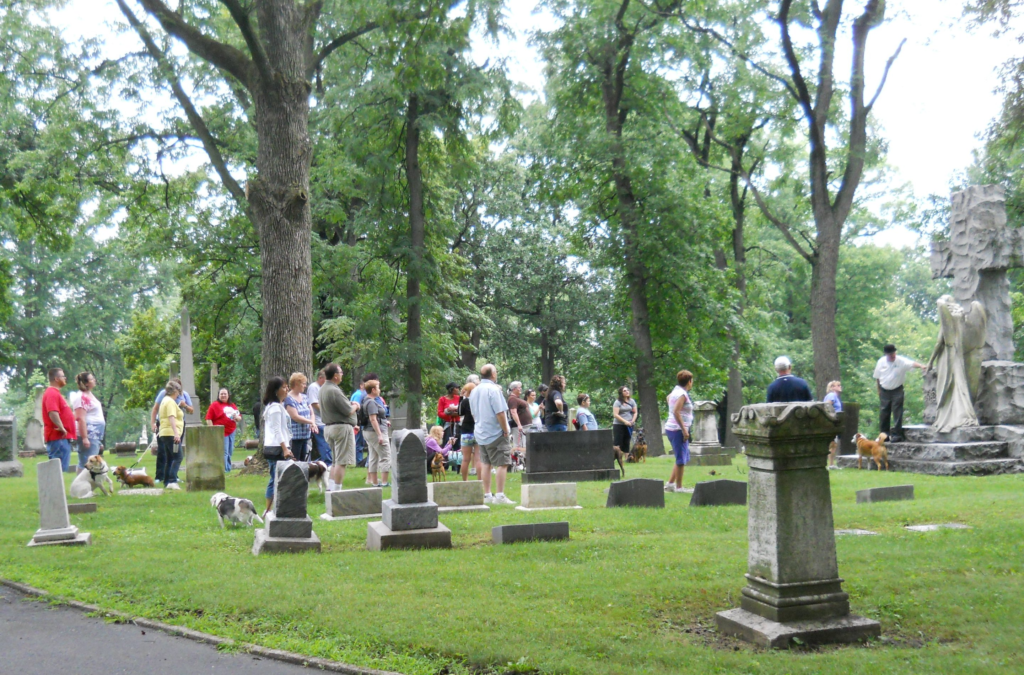Digital cemetery mapping is a key element for enabling cemetery tourism. Today, cemetery tourism is a growing market as traveler’s trek to graveyards around the world to reflect on their lives, seek out the grave of a famous person, or travel to learn more about their family by finding the final resting place of loved ones.

Visiting a graveyard wasn’t always reserved for those in mourning. Many historic cemeteries were designed as a park-like setting to welcome families onto the grounds and were meant to be explored. People once flocked to cemeteries for picnics and to socialize. The Lake View Cemetery in Cleveland, Ohio is one such cemetery. Often referred to as the city’s “outdoor art museum,” walking, jogging, and driving through the cemetery is acceptable. There’s also another option to welcome tourists, a Sunday trolley is offered during the summer months that touches on many of the architectural and historical highlights of the cemetery.
Wandering through a graveyard or taking a guided tour allows us to learn more about the people who lived before us. We can reflect on the changing customs and attitudes about the hereafter. Today, people visit cemeteries for a number of reasons. They may study genealogy, or love photography. Maybe they like the architecture of the stones and monuments you find on the grounds. They may enjoy reading the endearing epitaphs or comparing the differences between an historic cemetery and a memorial park.
Most cemeteries welcome the public at no charge and many offer maps, brochures, smartphone apps, audio tours, or guided tours that highlight notable graves, statues, monuments, chapels and other architectural structures. There are also many books that have been written on the topic in recent years. Digital cemetery mapping provides a platform to facilitate cemetery tours.
Around Halloween, a number of cemeteries will raise a few hairs with events that illuminate the sometimes dark and tortured backstories of the buried. D.C.’s Congressional Cemetery, for one, organizes “Murder and Mayhem: Tragic Deaths at Congressional Cemetery” walking tours. Volunteers in period dress channel the personalities residing in the 19th-century Cedar Rest Cemetery in Bay Saint Louis, Miss. Docents also don costumes on the “Capturing the Spirit of Oakland” tour in Atlanta. However, the Georgia cemetery reassures the easily spooked that the tour is “designed to enlighten rather than frighten.”
“Cemeteries are a place of joy and a celebration of the dead,” said Mary Margaret Fernandez, program outreach coordinator with the National Trust for Historic Preservation. “They tell the story of people.”
Out of respect for residents and their loved ones, many cemeteries limit the activities permitted inside their gates. Mount Auburn doesn’t allow biking, running, dog-walking or picnicking. St. Louis Cemetery No. 1 prohibits two New Orleans staples: food and booze. Bonaventure has an incredibly specific rule: No sitting on Conrad Aiken’s bench and drinking a bottle of wine with the Savannah author and poet laureate.
Cemeteries hold cultural and historical significance. They can tell you inspirational stories about the community in the past. You may visit the library or use the internet to seek historical information about particular things. Alternatively, you can also go to the museum and read the biographies of inspirational figures. However, cemetery tourism offers you something different. It will give you different perspectives you cannot get from any kind of learning space. Today, cemeteries are more than a place of reflection. They are a place of beauty and a place of history.
Read more about cemetery tourism.
Contact us today for a free quote.
